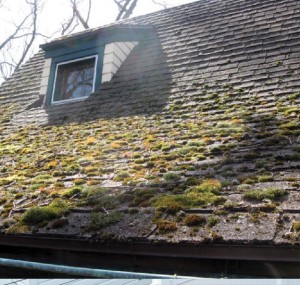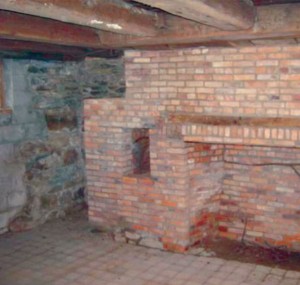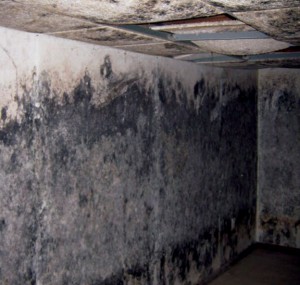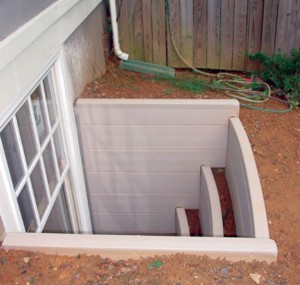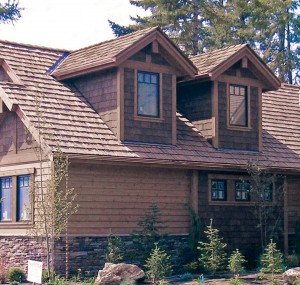By Douglas J. Burgasser
Moss Build-Up on Roofs
September 19th, 2012Falling Around Rochester
September 19th, 2012By Lana Torre
Are you searching for fun activities for your family this fall? My husband Jamie, is always on a mission to find interesting, outdoor fairs and fun festivals to attend on beautiful autumn weekends. We enjoy day tripping around the Finger Lakes and scenic southern tier. He loves to stop at farm stands to purchase organic vegetables. Last weekend we bought so many tomatoes that it took me 3 days of cooking ‘crazy sauce’ [ a homemade marinara] and those containers of sauce almost filled the freezer. One zucchini we bought was so large that I cooked it three different ways on three different days. And for 10 cents each, green peppers sliced and bagged with onions will be on hand all winter for a sausage and pepper dinner. Even on the coldest of winter days, Jamie will be bonding with his outdoor grill.
I
In late September you can attend the Naples Grape fest. This is a must on your must do list! We never miss it. Located on rt 21 south, just past the end of Canandaigua Lake. This fest offers up an homage to the grape and everything purple. There are craft and art vendors, wine tastings and [not to be missed] the grape pie contest. There are fair games and plenty to do with the kidlets too. Wear your purple pride and be sure to bring home a grape pie [we love the pie with the crumb topping].
I
Also, in late September is the Appleumpkin Fest. This fest is in the quaint community of Wyoming, known for it’s historic Gaslight Village. Events are a baking contest, music and entertainment including country clog dancers and an Irish band.
I
The Garlic Fest in Cuba is a fest for the foodies. A new king and queen of garlic will be crowned and given staffs adorned with large garlic bulb finials. Garlic braiding demos and a garlic cook off at the ‘stinking rose’ food tent are some of the highlights.
I
My sister never misses the Hilton Apple Fest. Here you can enter an apple pie in the great apple pie baking contest. There will also be an auto show and music by the 60’s group, the Invictas.
I
For dates and times, check out these websites visitRochester.com, Rochesterkidsoutandabout.com, or localwineevents.com.
I
Get out of the house and hop in the family truckster and enjoy a fall festival. While riding around, stop at farm stands and bring home local produce. Nothing is more beautiful then a large wooden bowl on the table brimming with fresh, sweet apples. And remember to bring home a grape pie from Naples, [the pie with a crumb top].
Foreclosures – Build Your Team First!
September 19th, 2012By Gini Denninger
Finished Basements
September 19th, 2012I Was You! Or Maybe You Were Smarter Than This.
September 19th, 2012By the Beautiful Sea
September 19th, 2012By Lana Torre
More Than Just Vinyl – The Pros and Cons of Common Siding Materials
September 19th, 2012By Douglas J. Burgasser
Siding is the exterior cladding of a house that acts as the cosmetic finish and the first barrier against wind and water. Almost any material can be used as siding. Let’s talk about some of the common exterior siding materials that we see on homes in the Rochester area.
WOOD
Traditionally, for many generations, one of the preferred exterior siding materials has been wood. Whether it is wood shingles or wood siding, wood has proven to be a reliable and durable exterior siding material.
Primarily, wood siding and wood shingles are made either of pine or cedar. If it is kept properly painted or stained, a wood exterior can last for many generations. Some grades of cedar can even be left exposed to the weather and perform well. Of course, wood materials require exterior maintenance and most wood will weather and decay if not properly maintained. Homeowners must regularly caulk, scrape, and paint or stain the wood. In addition, wood exteriors are a natural material and are more prone to infestation from nature’s pests; including carpenter ants, carpenter bees, woodpeckers, and wasps.
BRICK
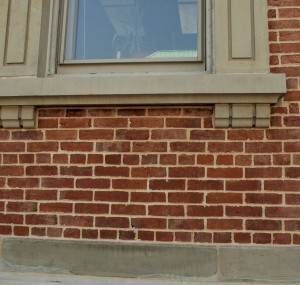
It’s pretty hard to beat the durability of a brick home. Brick is timeless and attractive. There are relatively few homes in the Rochester area whose exterior is entirely brick. On the other hand, there are many homes with brick facades on the front of the house.
Brick exteriors require very little, or infrequent, maintenance. Sometimes, re-pointing (re-mortaring of loose mortar joints) becomes necessary. If a soft brick was used, a few bricks could need to be replaced due to spalling or other wear. Overall, the advantages of a brick exterior are durability and low maintenance. Another advantage to brick is that it does have superior sound and wind insulation characteristics.
There are a few disadvantages of a brick exterior. First, brick is a relatively expensive material as compared to other more plentiful siding materials. The higher costs are due to both the cost of the material, as well as the labor costs associated with installation. Another drawback to brick would be that you cannot change its color or appearance once the initial choice is made, although painting brick is an option and there are many painted brick homes in Rochester. Unfortunately, once any material is painted, the paint must be maintained.
ALUMINUM
Aluminum siding was really the first widely used low-maintenance siding material. Aluminum siding was made available in many colors, textures and styles. It could be applied directly over wood siding, resulting in an almost maintenance-free home. Aluminum siding is weather resistant, low-maintenance and it has a lifespan of many decades.
Of course we all know that aluminum dents. Once aluminum siding and trim is dented it is not possible to remove the dents without replacing the damaged material or fixing the dents in a similar way that dents in a car are fixed. Making matters worse, it becomes difficult to find material that will match the existing texture and dimensions of the siding. Matching the color is almost impossible. This is partially because aluminum siding will fade, affecting its color. Eventually the siding weathers and oxidizes, noticeably affecting its appearance.
It is important to understand that aluminum siding can be painted. Of course, as is the case with any painting job, proper preparation is critical. The siding must be thoroughly cleaned and prepared. If painted properly, a paint job on aluminum siding can last many years.
VINYL
In many respects vinyl siding replaced aluminum siding as the material of choice for low maintenance exteriors. Like aluminum, vinyl siding is available in numerous designs and colors. It is essentially maintenance free and it will last for generations. The advantage that vinyl siding has over aluminum is that it is not as easily damaged. Vinyl siding has some “give”. In other words, it will not easily become dented or damaged if bumped or hit by an object.
Vinyl siding also fades or discolors slightly over a period of many years. Another disadvantage is that, much like brick, it is difficult to change the appearance or color of vinyl siding once the initial material choice is made. Vinyl siding can also be painted, but this is not done very often, and proper preparation is also very critical. Vinyl siding will become brittle as time progresses, due to the exposure to the sun’s rays. This makes is more susceptible to cracking from the impact of objects. Although vinyl siding is widely utilized, some traditionalists feel that vinyl is not as desirable as a more natural wood exterior. Further, the main component in vinyl siding is petroleum (oil), and this is not considered a renewable resource, like wood.
HARDBOARD
Hardboard siding is a material that became popular around the 1970’s. It is a lower cost alternative to wood. From a
distance it appears like traditional horizontal wood siding. However, it is usually made of Masonite® and it has not proven to be nearly as durable as wood.
Hardboard siding is very susceptible to damage due to its exposure to the elements. If it is not kept meticulously painted and caulked at the edges it will suck up moisture and become swelled, softened and deteriorated. The advantage to hardboard siding is its relatively low initial cost. However, the disadvantages outweigh this cost. Hardboard exteriors require a greater amount of maintenance and they are not nearly as durable as the previously noted choices.
ASBESTOS CEMENT SHINGLES
Exterior wall shingles are not always made of wood. Asbestos-based composition shingles are quite common in the Rochester area. It is a material that has proven to be long lasting and reliable. It is a paintable material, with the ability to hold a coat of paint noticeably longer than traditional wood siding or wood shingles. In other words, homeowners do not have to repaint the exterior of their home as often.
Asbestos shingles are somewhat brittle. As a result, it is quite common to find chipped or cracked shingles on the exterior of the house. They can be easily replaced, especially if the homeowner is fortunate enough to have a few spare shingles stored in the corner of their garage. We commonly tell people that if they have a house with asbestos shingles and another house in the neighborhood is in the process of removing their asbestos shingles, they should ask their neighbor if they can have a bundle of the old shingles so that they can use them in the future to replace any damaged shingles.
The advantages of asbestos cement shingles are the long life expectancy and the weather resistance. Painting maintenance is not nearly as important as it is with wood siding or hardboard siding.
The disadvantages to this material are its brittleness. Also, the word “asbestos” strikes fear in the hearts of some. However, since this is a material that is on the exterior of the house, and since it is not a material that readily degrades, there has not been much concern regarding possible health effects of this material. It will need to be properly removed and disposed of if the owner chooses to re-side their house with an alternate material, and special precautions should technically be followed if cutting or breaking up the shingles.
FIBER CEMENT BOARD SIDING
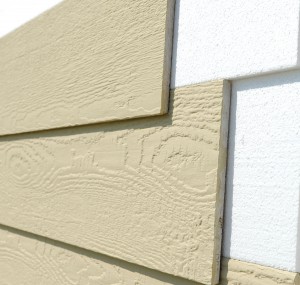
Fiber cement siding has become quite popular in recent decades. It is a siding that is composed of a combination of cellulose fibers and cement like materials. Because of the materials used in its manufacturer, fiber cement siding is popular as an environmental or “green” alternative. After all, the wood fiber in this type of siding does not come from harvested old trees. Also, the cement and sand materials that are utilized are readily available. In addition, there is a substantial life expectancy for this material, possibly exceeding fifty years.
Quite often you will hear this type of siding referred to as “HardiPlank®”. This is a brand name that to some extent has become synonymous with this material. The advantages of fiber cement siding are numerous. It is durable and long lasting, it requires minimal maintenance, and it is attractive. The downside to this material is its relative cost as compared to wood or vinyl. Also, it is relatively heavy and needs to be supported properly. Still, it is an excellent choice, judging by what we know thus far.
T-111
Basically an exterior plywood, with grooves to make it aesthetically more pleasing, T-111 siding is a low-cost, easy-to-install material. Unfortunately, like hardboard siding, T-111 must be installed properly and religiously stained and maintained to provide any significant life. The seams of the plywood do not overlap to sheet water away and, if proper trim and flashing is not installed, a lot of water will get behind the siding and damage the structure.
T-111 might be a good choice for sheds and smaller unheated structures, since it is easy to replace and repair. For a whole house, it is considered a lesser-grade material.
STUCCO (CEMENT AND EIFS)

“Stucco” is a generic term used for a cement-like finish. Usually the finish will have a rough texture. Stucco comes in many forms. Old cement stucco was applied over block or over a wire mesh. This material has many of the qualities of brick, since it is a masonry finish. Keeping cracks and gaps patched and sealed is important, and once stucco is painted, it needs to keep being painted for cosmetic reasons and for greater water resistance. With unpainted stucco, choosing a contractor that can match the color and texture is important when making repairs.
Modern stucco is often referred to as “EIFS”. This stands for “exterior insulating and finishing system”. The most popular brand name for this material is “Dryvit®”. This material is used extensively for commercial buildings. If installed properly, this material is attractive and durable. However, there are many, many details of installation that must be closely followed. If not, water can get behind the siding system and become trapped. The trapped moisture can rot or rust interior wall components and lead to other water damage. Again, the choice of a qualified contractor is very important when installing or repairing this material.
ASPHALT SHINGLES
In years past, many city homes had a type of asphalt shingle siding installed. This basically consisted of a thick asphalt shingle (similar to a roofing shingle) installed over a fiberboard base shingle. Most of this siding that remains on rural and city homes is worn and old. The shingle deteriorates after many years, and the fiberboard beneath suffers water damage. Although repairs are often made, matching shingles cannot be found easily and repairs become cosmetically objectionable. Replacing this siding is the best long-term repair in most cases.
MUD (THE MUD HOUSE)
Almost every building material has been used as siding at one time or another. We even have an example of dirt used for the exterior walls of a home in the Town of Penfield. This is the known as the Mud House. Repairs to the exterior consist of getting additional mud from the property and applying over the exterior.
Hardboard shingles, fiberglass cement shingles, Teflon-coated hardboard siding, steel siding, etc.
We run into different siding materials from time to time. The above list just scratches the surface of the multitude of materials out there. If you run into a new or different material, we encourage you to call us with questions or to increase our knowledge base.
Buyers Beware (Sellers too)
September 19th, 2012Simple Summer Ideas
September 19th, 2012By Lana Torre
Could Getting a Loan Become Even More Difficult?
September 1st, 2012As Alex reported 9/1/2012 on Property Source Radio.
Realtor.org – Daily Real Estate News | TUES, AUG 28, 2012
News Sponsored by Abodey.com
———————————————————————————————–—–
Fannie Mae, one of the nation’s mortgage giants, announced new lending restrictions that might make it even more difficult for some home buyers to qualify for a loan.
New applicants and home owners looking to refinance may find they have to meet more stringent standards, such as in meeting new loan-to-value ratios in qualifying for a mortgage. For example, Fannie announced that the maximum loan-to-value ratios permitted will now be 90 percent, down from 97 percent. Also, the GSE says that some loans will now require higher credit scores. For example, borrowers who are applying for an adjustable-rate loan will need a credit rating of 640—which is up from 620.
Also, self-employed applicants may be required to supply more tax information, such as two years of tax returns to verify their income.
“This can knock a decent portion of borrowers out of the picture who had a rough year in business two years ago,” says Matt Hackett, underwriting manager at New York lender Equity Now Inc. “You’d be surprised how much of an effect this has.”
Fannie Mae, along with fellow GSE Freddie Mac, back about two-thirds of all new mortgages.
Source: “How Fannie Mae Is Making it Harder to Get a Home Loan,” Credit.com (Aug. 27, 2012)

